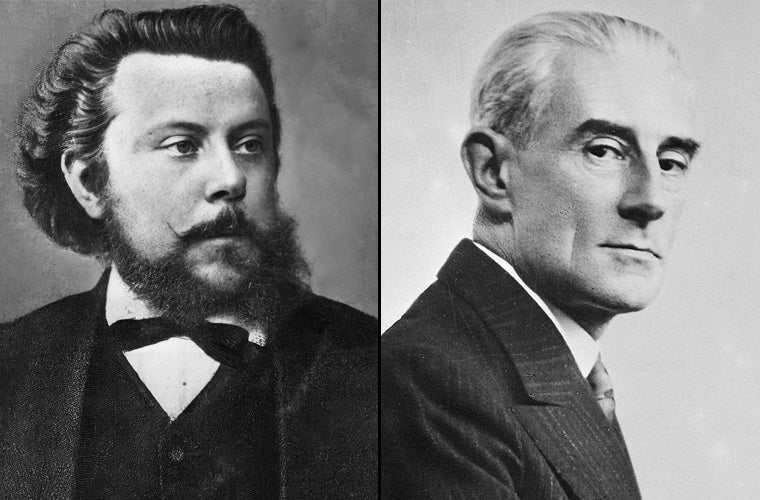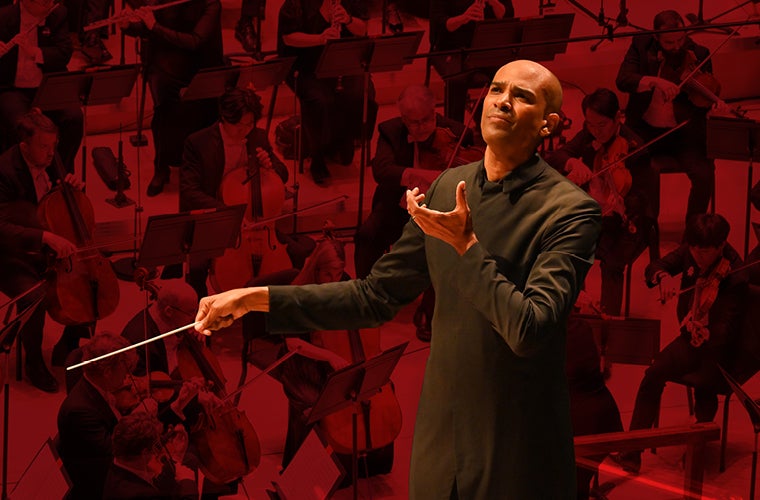
Mussorgsky/Ravel
Biography
Modest Petrovich Mussorgsky (1839–1881) was one of five Russian composers known as the 'Mighty Handful' for their nationalist tendencies.
Mussorgsky was one of music's great originals. Everything he composed was conceived in terms of natural rhythms, melodies and harmonies of Slavonic folk music. He constantly railed against tradition, honing his music in order to make it, in his words, "an artistic reproduction of human speech in all its finest shades."
Mussorgsky's natural talent was obvious from the start. Initially taught by his mother he became a pianist prodigy, making his debut at nine years old. Four years later, in 1852, he enrolled at the Imperial Guard’s cadet school and composed the Porte-en-seigne polka, a surprisingly cheery piano miniature.
In 1863, a shortage of funds forced Mussorgsky to take a job as a clerk in the civil service. Though brimful of startlingly original ideas, the pieces he composed in his spare time often lacked any musical logic and he abandoned many works out of sheer frustration. Indeed, if it hadn’t been for Rimsky-Korsakov’s later kindness and support, Mussorgsky, and his music, might have fallen by the wayside.
Throughout the 1870s, Mussorgsky became increasingly prone to epileptic seizures, and his predilection for alcohol quickly developed into full-blown dependency.
Mussorgsky's most famous work is Pictures at an Exhibition. It departs from convention at almost every turn. By way of a series of interludes, the composer himself regularly appears in the form of a recurring 'Promenade' theme. As he strolls around the gallery, stopping at each new stage design or watercolour by his friend Viktor Hartmann, the 'Promenade' transforms; sometimes settling us down for the next picture, occasionally creating a startling change of atmosphere.
Maurice Ravel (1875–1937) was a 19th and early 20th century French composer of classical music. His best known works are Bolero and Daphnis et Chloé.
Maurice Ravel was admitted to the Paris Conservatoire at age 14, and later studied with Gabriel Fauré. His ballet Daphnis et Chloé was commissioned by Sergey Diaghilev. Other pieces include the the orchestral works La Valse and Boléro. Ravel remains the most widely popular of all French composers.
Maurice Ravel was born Joseph-Maurice Ravel on March 7, 1875, in Ciboure, France, to a Basque mother and Swiss father. In 1889, at the age of 14, Ravel began taking courses at the Paris Conservatoire, a prestigious music and dance school located in the capital of France, studying under Gabriel Fauré.
Ravel continued to study at the Conservatoire until his early 20s, during which time he composed some of his most renowned works, including the Pavane pour une infante défunte (Pavane for a Dead Princess; 1899); the Jeux d'eau (1901), also known as "Fountains" or "Playing Water," a piece that Ravel dedicated to Fauré; the String Quartet (1903), which is played in F major and follows four movements; the Sonatine (circa 1904), for the solo piano; the Miroirs (1905); and the Gaspard de la nuit (1908).
Ravel's later works include the Le Tombeau de Couperin, a suite composed circa 1917 for the solo piano, and the orchestral pieces Rapsodie espagnole and Boléro. Possibly the most famous of his works, Ravel was commissioned by Sergey Diaghilev to create the ballet Daphnis et Chloé, which he completed in 1912. Eight years later, in 1920, he completed La Valse, a piece with varying credits as a ballet and concert work.
Ravel died in Paris, France, on December 28, 1937. Today, he remains widely regarded as France's most popular composer. He is remembered for once stating, "The only love affair I have ever had was with music."
Featured Events
Pictures at an Exhibition
- Dances of GalántaKodály
- Violin Concerto No. 2Bartók
- Pictures at an ExhibitionMussorgsky/Ravel
